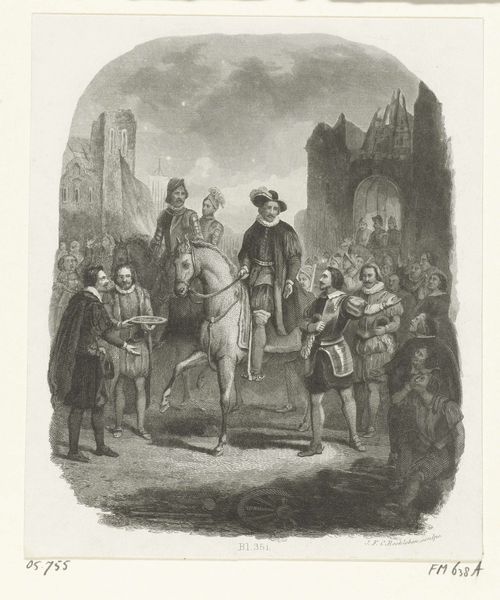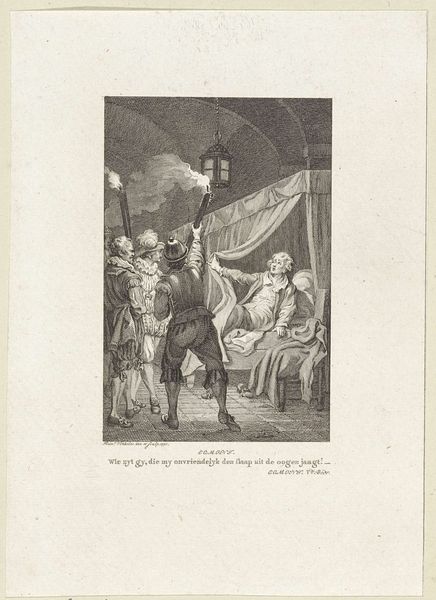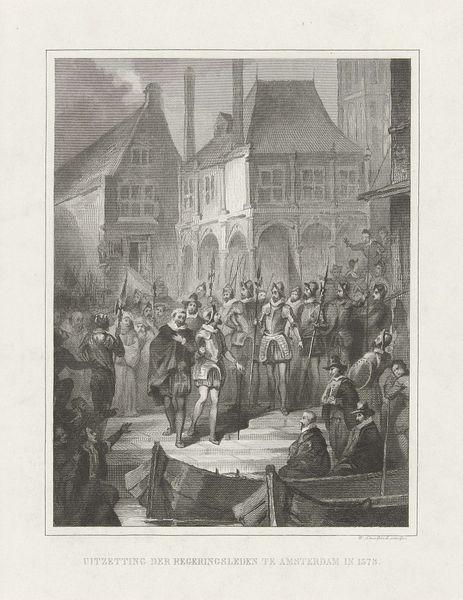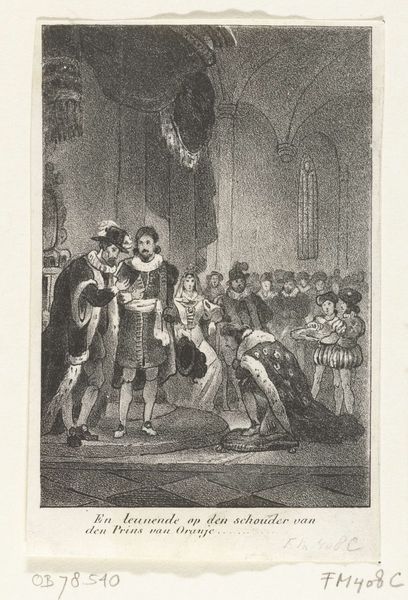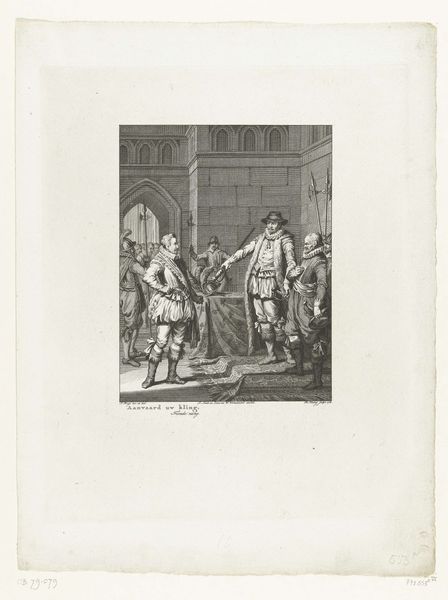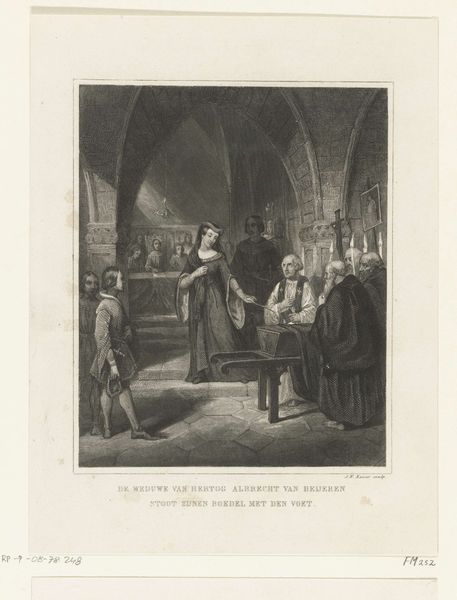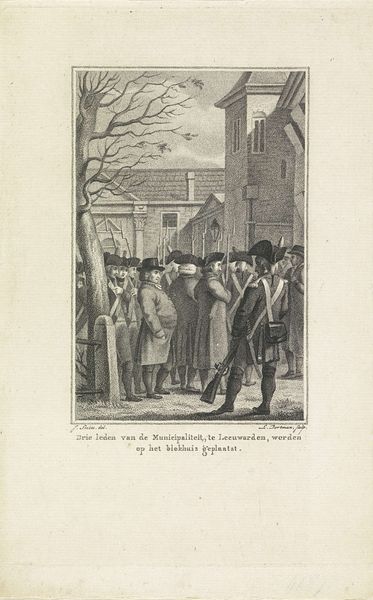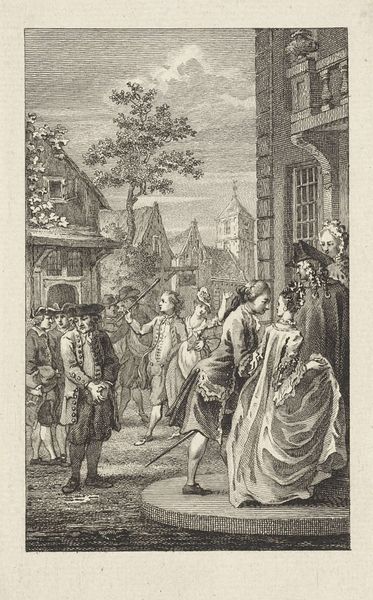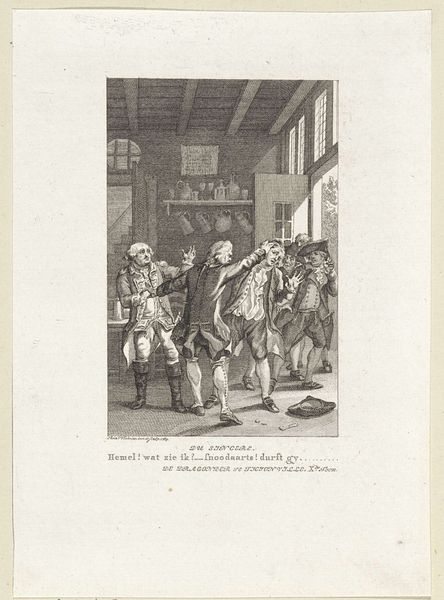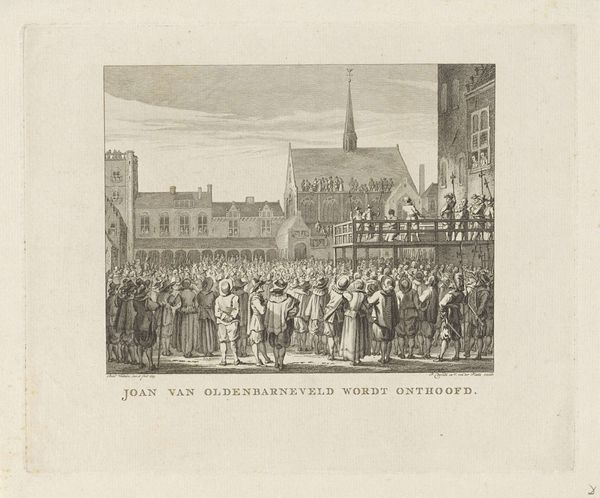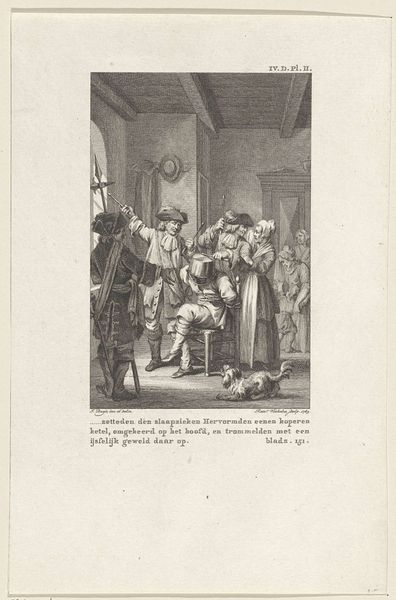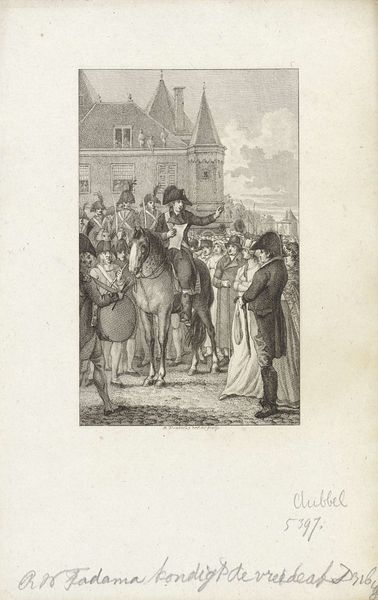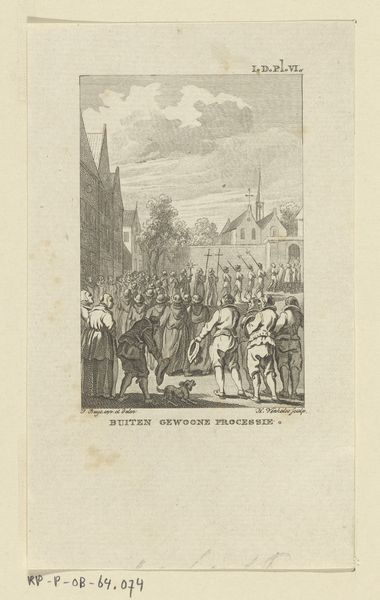
print, engraving
#
portrait
#
aged paper
# print
#
soldier
#
19th century
#
cityscape
#
genre-painting
#
history-painting
#
engraving
Dimensions: height mm, width mm
Copyright: Rijks Museum: Open Domain
Curator: I’m struck by the vulnerability etched onto that figure’s face, don't you think? He seems caught between hope and desperation. Editor: That’s an astute observation. This print, “Kastelein voor Huis ter Eem” by Johann Wilhelm Kaiser, dating from around 1829 to 1839, portrays precisely that moment of tension. Engraved on what appears to be aged paper, it presents us with a historical genre scene brimming with symbolic meaning. Curator: The keys! He’s offering the keys to what appears to be the town. Keys traditionally signify authority, but here, their presentation seems to be a plea. Is this about the Dutch surrender during the Eighty Years' War, perhaps? Editor: It is tempting to see it that way. Given Kaiser's engagement with historical themes and the nationalistic sentiments pervasive in the 19th century, a reference to Dutch history isn't far-fetched. We must consider the impact such imagery would have on a public still grappling with national identity after periods of upheaval. Curator: The body language supports that idea. The commanding figures, likely Spanish soldiers, stand tall and unyielding, while the townsman offers the keys with a bowed head and outstretched hand. There is a cluster of townsfolk who seem very distressed too, notice the child looking very glum. But why that particular setting? House ter Eem was not an important landmark in those conflicts. Editor: Good point. While seemingly specific, "Huis ter Eem" perhaps serves as an allegorical "everycastle," representing the universal impact of conflict on communities and their traditions of civic authority. The looming architecture set against the supplication invites contemplation of power dynamics and national trauma. Curator: So, it is about constructing the heroic and traumatic Dutch past, in which a moment of submission actually demonstrates true fortitude. An image to cultivate the viewer's national and collective sentiment! And that sentiment, in turn, serves particular political agendas. Editor: Exactly. And viewing that print becomes more than an aesthetic experience. It invites scrutiny of the intersection of art, politics, and collective memory. Curator: I came searching for images and ended up studying complex layers of historical and emotional storytelling! Editor: Isn't that what makes analyzing art so fascinating? There are infinite depths!
Comments
No comments
Be the first to comment and join the conversation on the ultimate creative platform.
